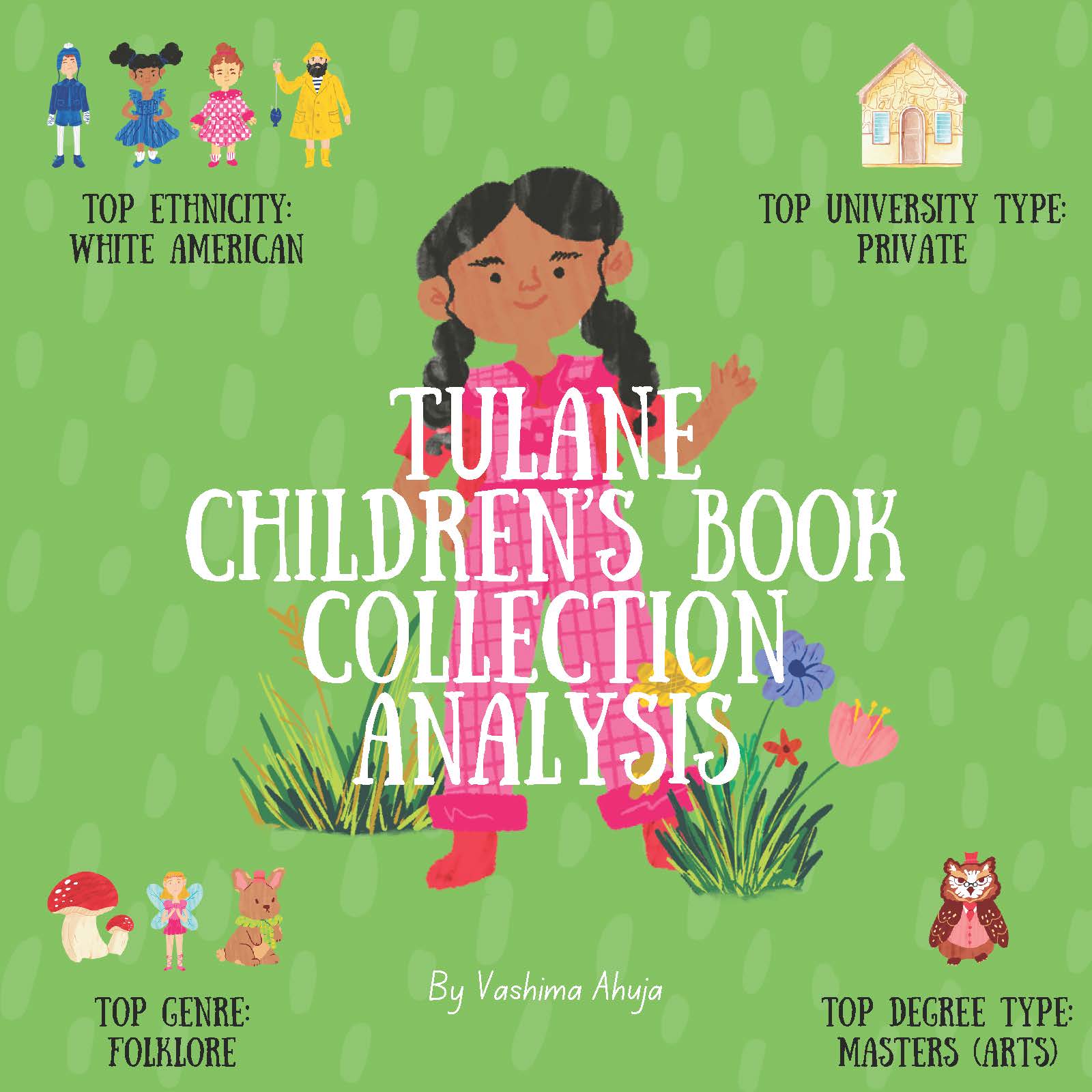Exploring Diversity in Children's Literature: A Collaborative Project Between Tulane Students and the Library
Children's literature holds transformative power. It shapes the way young readers perceive themselves and the world around them, fostering empathy, imagination, and a lifelong love of learning. Recognizing this, Kay P. Maye, a Social Sciences & Data Librarian, recently partnered with Professor Hazel Woods and her students to examine the diversity and representation within the library’s children’s book collection, the Amoss Collection, in her class "Child & Adolescent Literature."
Located on the 2nd floor of Howard-Tilton Memorial Library, the Amoss Collection consists of picture books and chapter books and was established by children's book author and Newcomb College alumna Berthe Amoss. The collection is intended to support aspiring children's book writers.
This initiative provided an invaluable opportunity for students to delve into the rich landscape of children’s literature and assess how well it reflects the diverse identities and experiences of its readers. Their analysis focused on 1/8th of the collection, with further analysis planned by Kay P. Maye in collaboration with other courses. The findings from this collaboration not only shed light on existing gaps but also laid the groundwork for actionable changes to enhance representation.
A Student’s Journey: Reflections from Hayley Harrison
For Hayley Harrison, a key participant in the project, the experience underscored the profound role children’s literature plays in shaping young minds:
"Children are highly impressionable beings who acquire knowledge through the content they are exposed to in their environment. Collaborating with the Howard-Tilton Memorial Library to analyze this children’s book collection was an incredible educational experience. I am hopeful our findings will inspire greater diversity and representation in future collections!"
The analysis revealed notable disparities, including the absence of LGBTQ+ narratives, bilingual or multilingual stories, and books addressing neurodiversity. Additionally, geographic representation within the collection was skewed, with 62.5% of authors hailing from the United States and significant underrepresentation of voices from Africa, South America, and Southeast Asia.
Professor Hazel Woods: On the Magic of Children’s Literature
Professor Hazel Woods, who guided her students throughout the project, emphasized the universal importance of children’s books:
"Children’s literature is an important area to investigate because books allow children to strengthen their reading skills, develop an interest in reading for pleasure, and learn about the world and the people, past and present. Reading children’s literature is full of wonder, knowledge, emotion, escape, and pure joy!"
This sentiment was echoed throughout the project as students uncovered both the potential of children’s literature to connect communities and families and the missed opportunities in addressing contemporary issues like climate change, racial equity, and immigration.
Learning Through Research: Insights from Students
For many students, this project was their first deep dive into collaborative research with a librarian, and the lessons learned were profound. As Siyi Gu shared:
"Working with a librarian was an eye-opening experience because it gave me access to tools and resources I didn’t realize were available. For example, when I couldn’t find specific diversity markers (like ethnicity or gender) directly in the dataset, the librarian showed me how to cross-reference other sources, like biographical databases, author archives, and public records, to complete the analysis."
The collaboration also helped students refine their research methodologies. From defining diversity as a combination of race, ethnicity, gender, and thematic content to utilizing Excel for data analysis, the project taught critical skills.
"Organizing the data into charts and graphs helped me see trends that weren’t immediately obvious from the raw numbers," Gu noted. "The overrepresentation of White/Caucasian authors was striking when displayed visually, making my findings much more impactful during presentations."
Surprising Discoveries
Among the most striking findings was the limited representation of marginalized groups across multiple dimensions. The collection lacked narratives representing LGBTQ+ experiences, bilingualism, and neurodiversity—key facets of modern life. Themes often centered around traditional topics like family, fantasy, and animals, with little attention paid to contemporary issues like immigration or climate change.
Geographic disparities were also evident. While some international authors were included, vast regions like Africa and South America were notably absent, limiting the breadth of cultural perspectives available to young readers.
These findings not only highlighted the collection’s shortcomings but also underscored systemic biases in the publishing industry that perpetuate these trends.
The Broader Impact
Reflecting on the project, students recognized the significance of their work in pushing for change.
"Investigating children’s literature is essential because it sheds light on whose voices are amplified and whose are left out," one student explained. "Ensuring diversity in children’s literature is not just about inclusivity—it’s about creating a generation of empathetic, informed, and empowered individuals."
For librarians and educators, the project reaffirmed the importance of consciously seeking out and supporting diverse voices in literature. As one student concluded:
"This analysis reminded me of the power of stories to inspire curiosity, foster empathy, and connect us to each other. It’s not just about adding more books to a collection—it’s about creating a space where every child feels seen, valued, and inspired."
Moving Forward
Howard-Tilton Memorial Library is committed to leveraging the findings of this project to build a more inclusive and representative children’s book collection. By addressing gaps in diversity, the library aims to provide a space where every child can see their identity reflected in the stories they read.
This project serves as a testament to the power of collaboration between students, faculty, and librarians. It highlights how libraries can drive meaningful change by fostering dialogue, supporting research, and championing diverse narratives.
To learn more about this initiative or explore ways to get involved, please contact Kay P. Maye, kmaye@tulane.edu
12/13/2024
